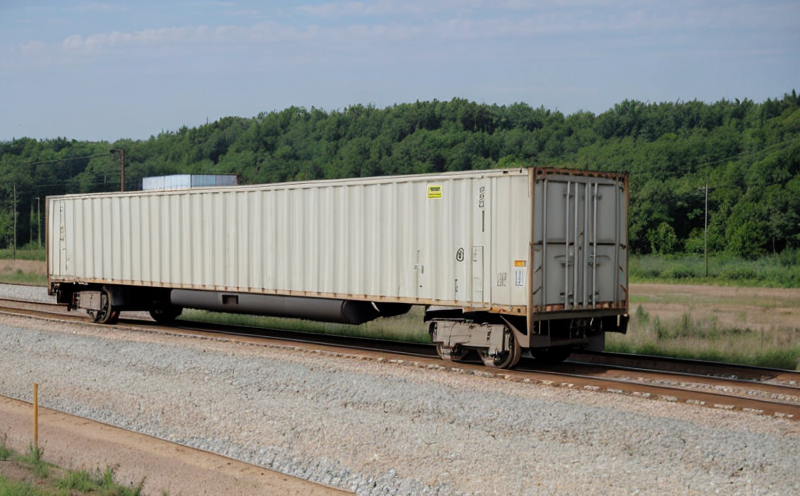EN 14531 Braking Distance and Stopping Performance Testing
The European Standard EN 14531 specifies the requirements for testing braking distance and stopping performance of railway wagons. This critical test is essential to ensure that freight wagons comply with safety regulations, enhancing reliability in rail transportation systems.
Compliance with EN 14531 ensures that wagons meet stringent European Union (EU) standards, which are designed to protect both passengers and cargo during transit. The test evaluates the wagon's ability to come to a safe stop under various conditions, including different speeds, payloads, and track conditions.
The testing process involves several steps that simulate real-world scenarios. Wagons are typically tested on an approved test track with controlled environmental conditions. The test setup includes a calibrated test train pulling the wagon to be tested at specific speeds before applying emergency braking. The stopping distance is measured precisely using high-precision sensors and cameras.
The acceptance criteria for EN 14531 testing are stringent, requiring wagons to meet specified maximum stopping distances under defined conditions. These conditions include different payloads and environmental factors such as temperature and humidity. Rigorous calibration of the test equipment ensures accurate results that can be relied upon by regulatory bodies.
Understanding the real-world implications of this test is crucial for railway operators and manufacturers. The braking distance directly affects safety, reducing the risk of accidents caused by insufficient stopping power. Efficient stopping performance also contributes to reduced wear and tear on track infrastructure, leading to longer asset lifespans and lower maintenance costs.
- Customer Impact: Improved safety for passengers and cargo, increased reliability in rail transportation systems, compliance with EU regulations, enhanced trust among stakeholders.
In addition to the primary testing parameters, specimen preparation is crucial. This includes ensuring that wagons are fully loaded according to specified weights and conditions to simulate real-world scenarios accurately. The instrumentation used in these tests must be calibrated regularly to maintain accuracy and reliability.
The results of EN 14531 testing provide critical data for quality managers and compliance officers, who can use this information to make informed decisions about maintenance schedules and design improvements. R&D engineers benefit from the detailed insights into wagon performance, which can inform future innovations in braking systems.
For procurement teams, this test ensures that they are sourcing wagons that meet high standards of safety and performance. By adhering to EN 14531, railway companies ensure their compliance with EU regulations while also contributing to a safer transportation network overall.
Why It Matters
The importance of EN 14531 testing cannot be overstated in the context of railway and transportation safety. Ensuring that wagons meet these stringent standards is critical for preventing accidents, which can have severe consequences including loss of life, property damage, and disruptions to transportation networks.
By adhering to this standard, railway operators contribute to a safer rail environment, fostering trust among passengers and cargo owners alike. Compliance also helps in avoiding potential legal issues and financial penalties associated with non-compliance. The test results provide valuable data that can be used for continuous improvement of wagon designs and operational practices.
The real-world implications extend beyond immediate safety measures. Efficient braking systems contribute to smoother operations, reduced wear on tracks and wagons, and extended asset life cycles. This translates into long-term cost savings and improved overall efficiency in rail transportation.
Eurolab Advantages
As a leading laboratory specializing in railway testing, Eurolab offers comprehensive services that go beyond just EN 14531 compliance. Our state-of-the-art facilities and experienced team ensure that each test is conducted to the highest standards.
- Expertise: Our engineers have extensive experience in performing these tests, ensuring accuracy and precision.
- Technology: We leverage advanced instrumentation and software to capture detailed data during testing.
- Consistency: Regular calibration of equipment ensures consistent results over time.
- Comprehensive Reporting: Our reports are thorough, providing not only the test outcomes but also recommendations for improvement based on the findings.
We work closely with our clients to understand their specific needs and tailor our services accordingly. Whether it's routine compliance testing or development of new products, Eurolab provides the expertise and resources necessary to meet those goals effectively.





